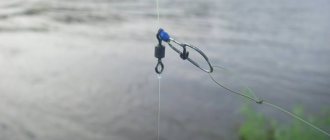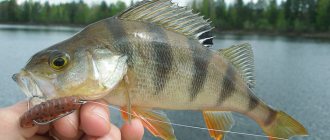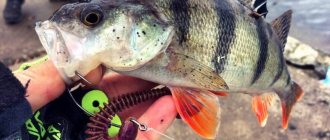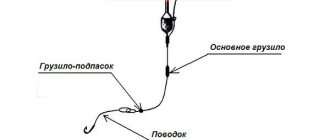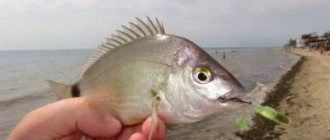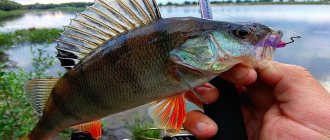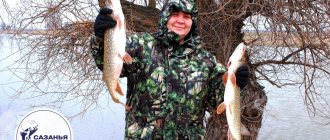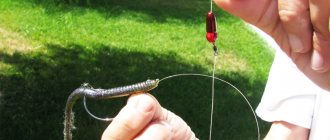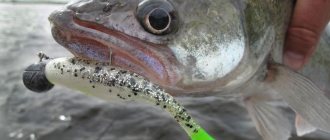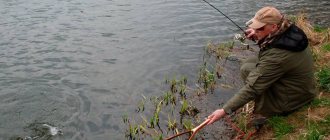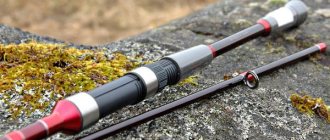Pike perch is a fish for the season, a valuable trophy for a fisherman. Each time requires its own methods of fishing - from the jerk to the jig. Successful fishing for pike perch is achieved using a retractable leash.
Catching pike perch is quite a troublesome task; here you won’t limit yourself to spoons and jigs, but you can make a rig with a retractable leash.
A retractable leash is a structure where the sinker and the bait are at different levels. You can do it both at home and on the shore.
It is important to keep in mind the pros and cons of using a retractable leash.:
- Speed. It is adjustable, even until the mechanism stops completely, then the current works with the bait. To a fish, it looks like a standing fish.
- Bottom surface control. During the current, the sinker muddies the water, raising silt, and the bait is higher, its hook scrapes the bottom less and catches debris.
- Optimal size - a silicone bait is attached to the retractable leash (select the size according to the fish).
- Cheapness. Active rubber is hung in a pair - these are additional vibration tails and twisters.
To the cons we send:
- a lot of time spent on re-equipment;
- When predators are actively biting, this equipment does not work.
Features of fishing with a retractable leash:
- Fishing from a boat is difficult. Since the design is quite bulky, in cramped conditions and an overgrown bank it will be difficult to catch pike perch using a diverting leash.
- In case of strong currents, we select a test rod from 30 g, choose a cleaner place (we look at the cleanliness of the water from the shore). If, when descending from the reservoir, there are branches, silt, and mud, you should refrain from such fishing.
Will pike perch bite on a spinning rod today?
| Winter | December | – The winter months are not the best time to catch pike perch on a retractable leash. You need to manage to find ice-free bodies of water; usually the current in them is too fast for a comfortable habitat for pike perch. |
| January | – There is no bite in the winter months. But if you catch it, it’s on ice-free rivers. | |
| February | – The bite is weak and only on non-freezing rivers. | |
| Spring | March | – In some reservoirs in the southern part of Russia, pike perch may begin to bite weakly, but there is no need to talk about strong biting activity. |
| April | +- The bite is unstable and can vary depending on the dates on which pike perch spawn, during these periods the bite worsens. | |
| May | +- The bite is unstable and can vary depending on the dates on which pike perch spawn, during these periods the bite worsens. | |
| Summer | June | + Moderate bite in the early morning hours and during sunset |
| July | - Weak bite. There is a chance of catching only very early in the morning or at dusk | |
| August | ++ Strong bite. The closer to September, the more pike perch begins to bite throughout the day. But there is still priority in fishing at dawn and dusk. | |
| Autumn | September | ++ Strong bite. Pike perch gains fat before wintering and its activity is maximum throughout the day. |
| October | – Weak bite, the closer it gets to the cold, the less often you can find pike perch when fishing on a retractable leash. | |
| November | – No bite or very weak |
☸ Suitable baits
As for baits for catching pike perch using Moscow rigs, there are no restrictions. However, most fishermen prefer to combine this installation with edible silicone. This is a huge range of baits of different shapes and colors, allowing you to adapt to the preferences of the predator, regardless of the fishing conditions. These include vibrotails, twisters, imitations of worms, leeches and larvae, slugs, crustaceans, and octopuses.
The most catchable one is selected experimentally. But it should be remembered that in clean, transparent water with good lighting, it is better to offer the fanged fish fish with natural colors, and in cloudy water or at night, bright models will be more effective.
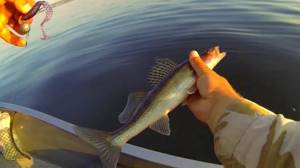
Tackle
Rod. Depending on the location and fishing conditions, choose the appropriate rod class. For small ponds with a depth of 1-3 meters, ultralight spinning rods with a test of 0.5-7 g and a length of 1.8-2.1 m are suitable. The lack of current, shallow depth and relatively short casting distance of the outlet leash do not require a heavier spinning rod.
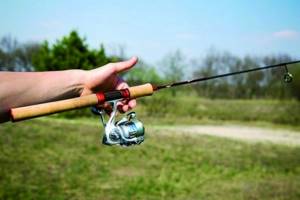
Daiwa Luvias, length 1.8 m, test 0.8-7 g
If there is a small current, a depth of 3 to 7 meters and the need for long casts, choose a rod with a test weight of 7-21 g. The target weight of the bait in such cases will be no more than 14 g and it fits perfectly into the average test of such a spinning rod.
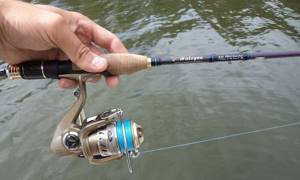
Hearty Rise Halcyon, length 2.1 m, test 2-10 g
Deep fishing spots of more than 7 meters, the presence of a current require a rod with a test of more than 15 g. We recommend a test of 10-40 g. This guarantees you variability in the choice of baits depending on the fishing conditions. When fishing from the shore, a length of 2.4-2.7 m is good; for fishing from a boat, a maximum length of 2.1-2.4 m is suitable for ease of fishing.
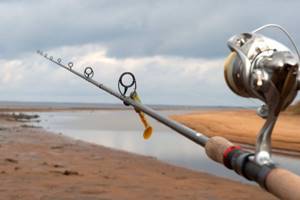
NorstreamPartner 70H, length 2.1 m, test 12-38 g.
The reel is matched to the spinning rod according to its class.
| Rod test | Reel Spool Size |
| 0.5-7 g | 1000 |
| 7-21 g | 1500-2000 |
| 10-40 g | more than 2500 |
Use the data in the table as a guide. The size of the reel spool means how much fishing line with a thickness of 0.01 mm the spool can hold. For example, size 1000 means that the spool will hold 100 meters of 0.1 mm fishing line.
Two popular solutions:
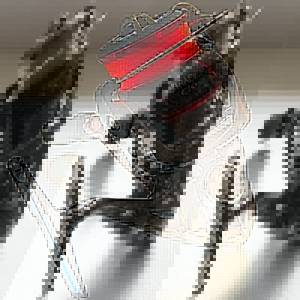
Shimano Stradic 1000

Shimano Sahara 3000
Other high-quality reels are available from the following companies: Daiwa, Okuma, Ryobi.
Fishing line. The choice falls exclusively on wicker.
The reason is its inextensibility, which is extremely important for good sensitivity of your sinker and the bait on the other side of the line. By choosing the right rod test and sinker test suitable for the pond, creating a stepwise retrieve, you will clearly feel not only the moments when the equipment lowers to the bottom, but also observe the changes in depth and even the nature of the bottom, which is very important in finding pike perch.
Spinning rod for fishing with a retractable leash
Catching pike perch from the shore using a spinning rod involves casting over a long distance. After all, finding this predator near the coastal zone is very rare. To cast as accurately and as far as possible, regardless of the equipment used, you will need a rod 2.5-3 meters long. This is an average length for a spinning rod, but it will be quite enough for any fishing. The rod action is fast or medium; the use of parabolic action blanks for catching pike perch is not justified. When playing, it rarely offers serious resistance, and specimens weighing more than 5 kilograms are rare. The test form should be 10-40 grams.
Correct installation of a diverter leash for pike perch
The equipment looks like this:
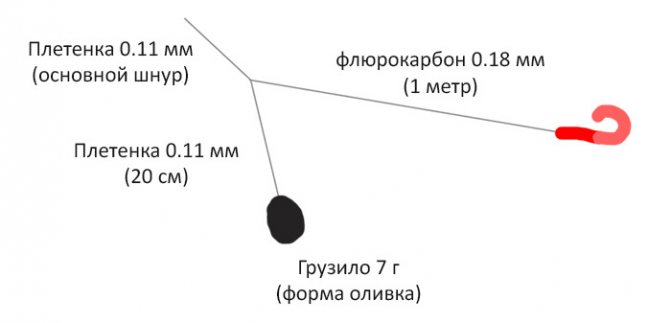
Step-by-step instructions for knitting a rig:
- Attach a sinker to the tip of the fishing line. To make it easier to change the weight of the load, you can attach a swivel with a clasp and change the weight if its weight is not large enough or, on the contrary, too heavy. Use any convenient knot, such as a double clinch, a grinder, or even a double loop.
- Above, 20 cm from the sinker, tie a fluorocarbon leash 1.2-1.5 m long. Use a double loop or figure eight knot.
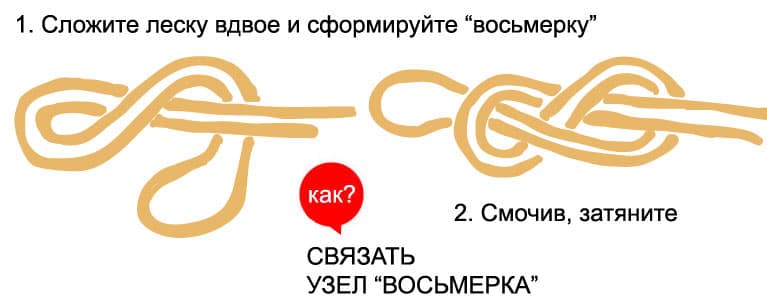
- Choose a length of leash suitable for your fishing conditions within 1-1.2 meters. The shorter the segment, the more active the bait will play; the longer, the calmer it will be. When the bite is bad and in bad weather, take a longer leash; in good weather and when the bite is good, take a shorter one. Let’s say the bite is good, so we measure 1 meter and tie an offset hook. The most suitable knots are the grinder or double clinch.
The use of a fluorocarbon leash is due to two reasons: 1. It is quite rigid and allows the equipment not to get tangled when casting and retrieving. 2. This material has invisibility properties in water, which makes it less frightening to potential prey.
- An offset hook, even with a small size of potential prey (100-200 g), should be selected larger due to the large mouth of the pike perch. The hooks must be sharp, because the lips and inner surface of the pike perch's mouth are very hard. It also follows from this that the hook should be stronger and more powerful than when fishing for perch and pike.
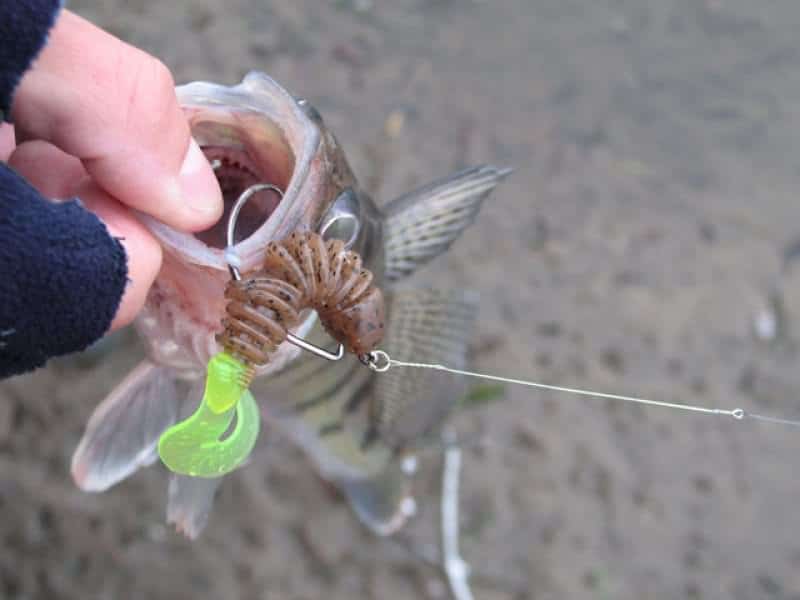
- In the photo above you can also see a small piece of thick braided fishing line, it is needed to prevent the pike perch from chewing through the fluorocarbon. However, this is an optional element and you can easily do without it if you use thick enough fluorocarbon. For example, from 0.31 mm, this thickness may seem too thick, but this is a necessity, since the strength of fluorocarbon is much lower than regular monofilament.
- All that remains is to put the twister on the hook. See how to do this correctly in the following video:
Video instructions for installing a diverter leash:
☸ Disadvantages of a retractable leash
Unfortunately, the retractable leash also has disadvantages, but they are not so serious as to refuse to use it. Here are the main ones:
1. It is inappropriate to use Moscow equipment during active biting.
2. Inability to fish a large area due to low fishing speed.
3. Impossibility of use on reservoirs with a viscous bottom (the sinker falls into the silt).
4. Loss of time when re-equipping the installation (replacing the bait, weight, switching from a blind type to a sliding one or vice versa).
5. Twisting of the leash (this usually happens when the fish is placed crookedly on the hook).
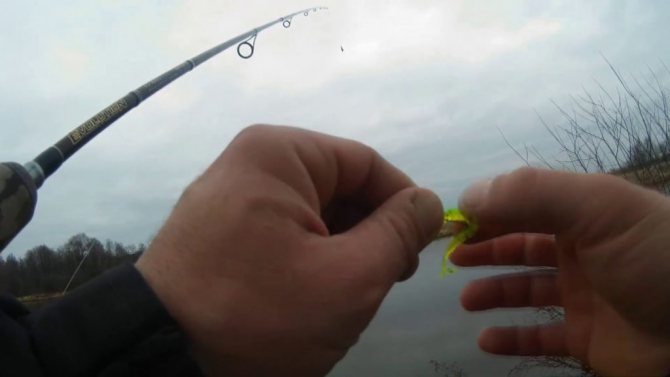
Selection of baits
Lures for the retractable leash are silicone twisters and vibrotails, much less often - foam rubber fish, wobblers and spinners.
Take a closer look at our rating of twisters and vibrating tails by popularity. These are proven baits that pike perch will definitely bite well on. Most of them are scented, which allows the pike perch to grab onto the bait even more strongly when biting, without letting go even if the hook was not as good as we would like.
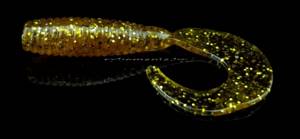
1. Crazy Fisn Angy Spin 2 – a classic twister with a very brightly playing tail

2. Bugsy Shad 72 - ask any amateur spinning angler who knows how to catch pike perch, he definitely caught it with this bait

3. Long John 07.90 #S13 – budget vibrating tail with bright play
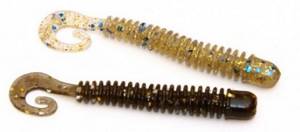
4. Lucky John Ballist 63 – a twister with a high-frequency tail action and a long body, ideal for catching pike perch, which often bites off large tails
For beginners, these 2 twisters and 2 vibrating tails will be quite enough. And advanced fishermen themselves will purchase a significantly larger number of baits in order to conduct their own experiments and draw conclusions about the effectiveness of a particular bait.
Write in the comments which silicone baits your pike perch bites best on and be sure to share information about fishing conditions.
The most important thing is not to miss the bite!
You can end up in a “fishy” place, but not catch anything. Now there are special self-cutting fishing rods with a special mechanism:
- At the moment of a bite, the line is tensioned, which leads to the triggering of the hook.
- The fish, hooked at the right moment, remains on the hook, and all you have to do is get it out of the reservoir!
- Slipknot. The leash is tied to the main line without using a loop. But this method has a number of obvious disadvantages - it is very difficult to remove or change the leash if the fishing conditions have changed, it is not easy to tie knots in the cold and it is simply impossible to stock up on leashes for all occasions!
- Fastening with a noose. The most optimal method! At home, a number of different sizes of leashes are prepared, with a hook at one end and a loop at the other. Directly at the fishing spot, the leash is tightened on the main line with a noose. If you need to change the leash, then the loop is slightly trimmed. Then, it is quickly removed from the main fishing line, on which the necessary leash is placed and tightened in the same way with a noose, and this procedure can be easily done in any frost and even while wearing thick gloves!
The presence of silicone cambrics in problem areas, and, in both versions, at the junction points where knots are formed, will prevent all sorts of tangling of the fishing line! Well, both a nod and a float are used as a bite alarm. Moreover, the latter is much more effective!
The fact is that it is quite problematic to change the nod if the fishing conditions have changed, unlike the float. In addition, when fishing in the cold, the hole must always be kept ice-free if fishing. Whereas the float will show a bite even if it is slightly caught in ice!
Choosing a fishing spot
Pike perch stands in snags
First, let’s ask ourselves a question: where to look for pike perch? If you do not have information about the whereabouts of pike perch in nearby reservoirs, then firstly, we recommend that you definitely visit local forums and find out where they are caught and in what specific places. This will greatly increase your chances of being caught. And secondly, let’s outline a few of the most important guidelines for your own search:
- A river with a fairly strong current. You are unlikely to find walleye in a pond or lake, but you are sure to find them in a river with a strong current. Volga, Moscow River, Neva and other large rivers - all of them have pike perch in large quantities.
- Depth more than 7 meters. Pike perch is a deep-sea predator, it lives at depths of up to 12-15 meters and it is worth looking for it away from the shore, starting from depths of 5-7 meters. Also on small rivers - try fishing on a steep bank, there a very quick drop to great depths is possible - these are the places where pike perch should stand.
- Snag. If you notice that there is a large amount of snags near the shore, this is another sign that snags are also possible in the water, and pike perch loves such places.
- Long range on large rivers and reservoirs when fishing from the shore. In such conditions, when casting at a distance of 70-90 meters, you will very likely end up in areas with a deep bottom, therefore there will be a chance to get the bait past the pike perch.
Fishing technique + video
The main rule is to methodically fish many areas, gradually moving along the shore. Don’t stop in one place, even if you notice a snag and are trying to lure the pike perch out of it. After 2-4 casts in 1 place, it is better to walk along the shore 20-30 meters and again make the same 2-4 casts in several directions, this way you will fish a large area of water and sooner or later you will find a pike perch site. But you need to do the wiring correctly, now we’ll figure out exactly how.
- The ideal bait retrieval when fishing with a retractable leash is a stepped retrieve.
- You cast the rig to the maximum distance, or to the distance required for your fishing conditions.
- Close the line guide of the reel to stop the line from flowing from the spool.
- Place the spinning rod slightly to the side and keep the line taut while looking at the tip of the rod.
- As soon as the line slacks, it means the bait is on the bottom, it’s time to start reeling.
- Stepped retrieving involves 1-4 turns of the reel handle and a pause until the load falls to the bottom again, and then again making those same 1-4 turns.
We recommend experimenting with the number of coil revolutions, speed of rotation, and pause duration. You should start with two quick turns. Make several casts using only this type of wiring and if it doesn’t work, try increasing the number of revolutions, reducing the speed of revolutions, and making longer pauses. That's all the practice is.
Installation methods for fishing
How to install and equip a spinning rod? This rig is no different from the usual perch rig, except for a slightly thicker fishing line (if for perch a thread with a cross-section of 0.18-0.2 mm is used as the main thread and for a leash - 0.13-0.15 mm, then for pike perch - 0 .25-0.4 mm and 0.2-0.25 mm, respectively). Next, let's look at everything in more detail.
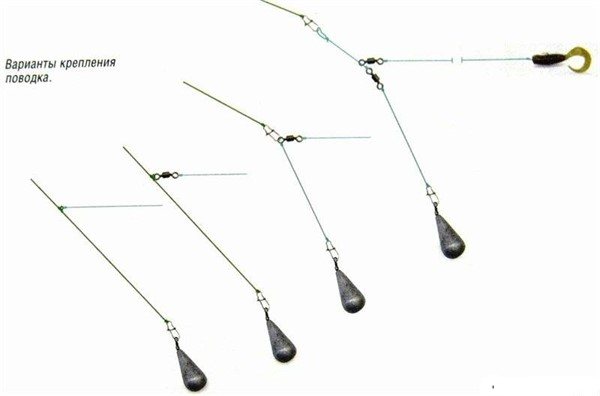
The retractable leash for catching pike perch has several installation methods:
- Using a triple swivel, to which the main thread, a leash with a hook and a piece of fishing line with a sinker are attached (blind installation).
- A weight is attached to the main thread, above which a leash with a hook is then attached.
- With two double swivels - a fastener is attached to the main line, onto which leashes with a hook and sinker are attached using swivels.
In all cases, the length of the leash with a hook is 1-1.5 m, and the distance to the load is 20-30 cm.
For reference. In the first option, instead of a triple swivel, you can tie all the parts with special knots, which greatly simplifies the installation of the equipment. However, there is also a significant disadvantage: in case of a snag, there is a high risk of losing the entire tackle.
Leash thread
As for the fishing line for a leash with a hook, the most suitable option would be a fluorocarbon thread with a cross-section of 0.2-0.25 mm, as it is least noticeable in the water.
Sinker
It should be streamlined and tied to the fishing line using a carabiner. Pear-shaped weights, Cheburashkas, Tyrolean sticks, as well as cone-shaped or pin-shaped ones are best suited.
Important! The weight of the sinker should exceed the weight of the bait several times.
Hook
It is preferable to opt for offset hooks , which will minimize the number of hooks. The size can vary significantly - it depends entirely on the bait.
Bait
Most often, pike perch are caught using silicone baits, but such baits as frogs, worms, small live bait (bleaks, minnows, etc.), foam fish, worms, lard, etc. can also be used. The ribbed twister showed very good results due to its unique game.
For reference. If the bite is active, you should use bright baits, and if the fish is sluggish, then dark colors are preferable.
Wobbler
In many cases, when fishing with Moscow rigs, wobblers are also successfully used. Surface models are best suited for these purposes. When using this type of bait, you should be aware that when casting, they tend to get tangled. This can be avoided by using a small pellet, which will give the equipment resistance to rotation.
Fishing
When biting, you will feel either a blow to the spinning rod or a strong complication in the rotation of the reel. This is a direct signal for immediate hooking. You need to cut sharply away from the pond. A 1-2 meter movement of the rod tip with a tight line will be enough. You must understand that the pike perch has a very strong mouth and without making a hook or making it insufficiently amplitude and sharp, you will have difficulties when fishing. By loosening the line reel, you can give the pike perch the opportunity to break away, shaking its head a little.
